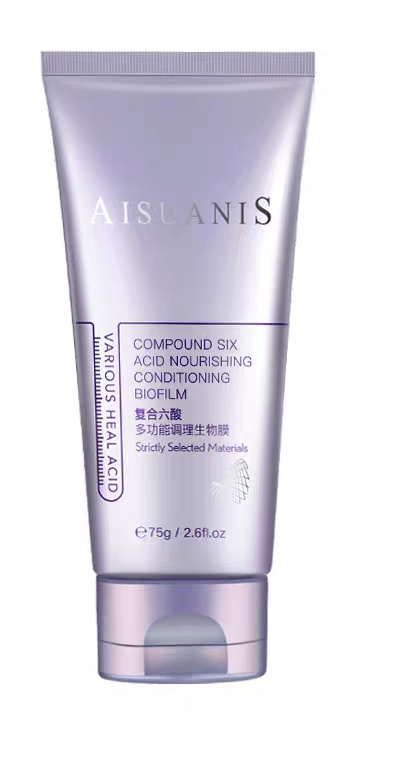Mandelic Acid
Quick Facts
- Mandelic acid is an AHA that comes from bitter almond
- It can gently lift off dead surface skin cells and make the skin more smooth and even
- It has antibacterial properties
- It’s promising against acne and post inflammatory hyperpigmentation
- It’s light sensitive, so choose a product with opaque packaging
Geeky Details
An AHA, that comes from bitter almond and is named after the German name of almond, “mandel”. If you have never heard of AHAs (where have you been? :)) then go ahead and read all about the most famous representative, glycolic acid. We will wait. When it comes to skincare you have to know about AHAs. So go and read it, and let’s meet here afterward.
Hey, welcome back! Now that you are an AHA and especially a glycolic acid expert we will just focus on the main differences between mandelic acid and glycolic acid.
The first difference is that mandelic acid has a bigger molecular structure than glycolic acid. Because of this it can penetrate less deeply and works more on the skin surface. Most probably this is the reason why mandelic acid is more gentle on the skin.
But this does not mean that mandelic acid is not an effective exfoliator. It is. It can gently lift off dead skin cells from the surface that results in smoother and more even complexion. Compared to glycolic acid the exfoliation action is slower but also safer. Even sensitive skin types tolerate mandelic acid pretty well.
Another distinct feature of mandelic acid among the AHAs is that it has well-known antibacterial properties. Because of this, it's a promising ingredient in treating acne. Also mandelic acid has effective skin brightening properties, and it seems to be particularly effective in lightening post inflammatory hyperpigmentation (PIH).
A study from 2009 has compared a 35% glycolic acid peel with 20% salicylic acid + 10% mandelic acid peel (SMP) on skins with active acne and post acne scarring and hyperpigmentation. SMP proved to be more effective both in treating acne lesions and hyperpigmentation and with fewer side effects. Of course salicylic acid is a superstar ingredient but still it is a promising result for mandelic acid.
Another promising study for mandelic acid and its ability to fight acne is a Polish study from 2015. It's not an independent study and it's also not placebo-controlled (or double blind), but still better than nothing. It examined the effectiveness of 5% and 10% mandelic acid (for 60 days) and found that "both are safe and effective for the treatment of acne". Mandelic acid was the most effective at decreasing the number of pustules (-60% in 60 days), but it also worked to a lesser extent for inflammatory nodules (-30%) and comedones (-20%).
Other good to know things are pretty similar to other AHAs: it’s effective at home pH range is 3-4, you should use a sunscreen next to it, and experiment a bit how much and how often your skin can tolerate it. According to manufacturer info, daily use is suggested up to 10%.
Oh, one more thing: as opposed to glycolic acid mandelic acid is light sensitive so choose a product with proper opaque packaging.
Bottom line: mandelic acid is a less researched, but a very promising AHA. Just like other AHAs it gently exfoliates, but it also has antibacterial effect and seems to be an especially good choice for acne prone, problem skin.
Show me some proof
- MB Taylor, Cosmetic Dermatology, 1999, Summary of mandelic acid for the improvement of skin conditions
- Dermatologic Surgery, Jan 1, 2009, Glycolic Acid Peels Versus Salicylic–Mandelic Acid Peels in Active Acne Vulgaris and Post‐Acne Scarring and Hyperpigmentation: A Comparative Study
- International Journal of Cosmetic Science, Dec 1, 2010, Comparative in vivo study of the efficacy and tolerance of exfoliating agents using reflectance spectrophotometric methods
- Przegląd Dermatologiczny 2015/4, Evaluation of the efficacy and tolerability of mandelic acid-containing cosmetic formulations for acne skin care






